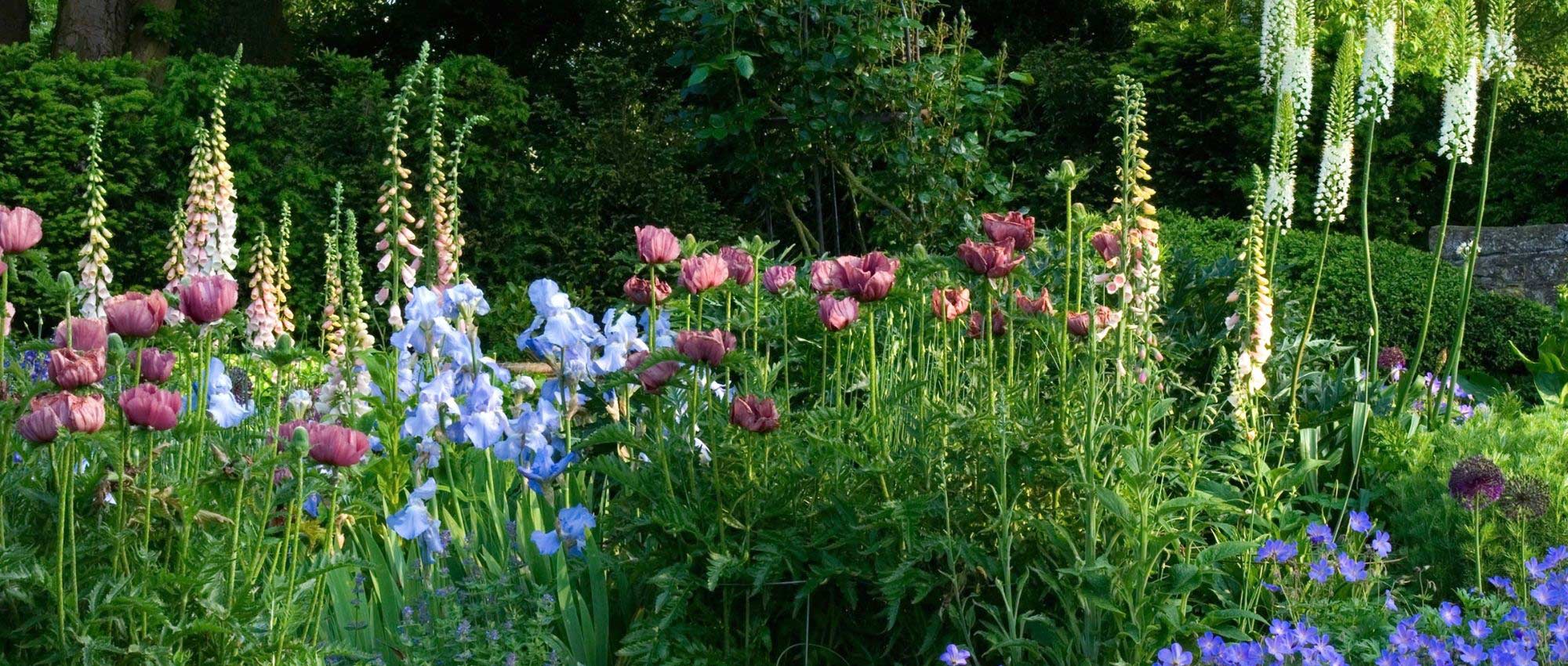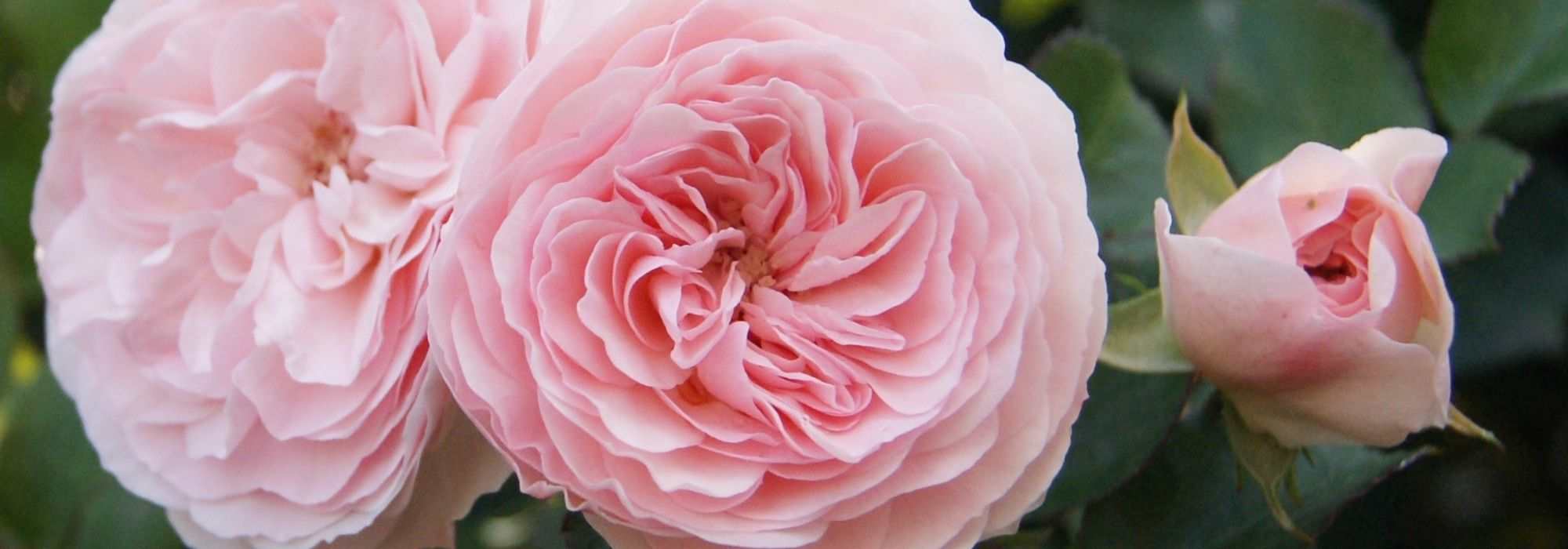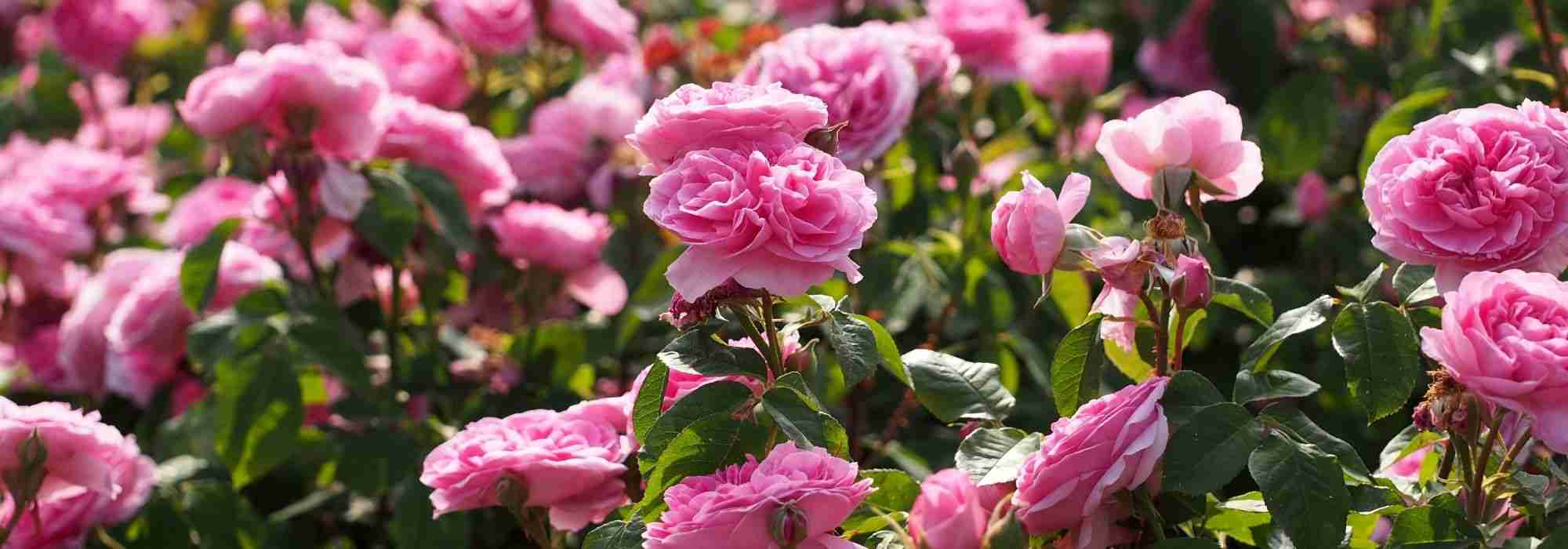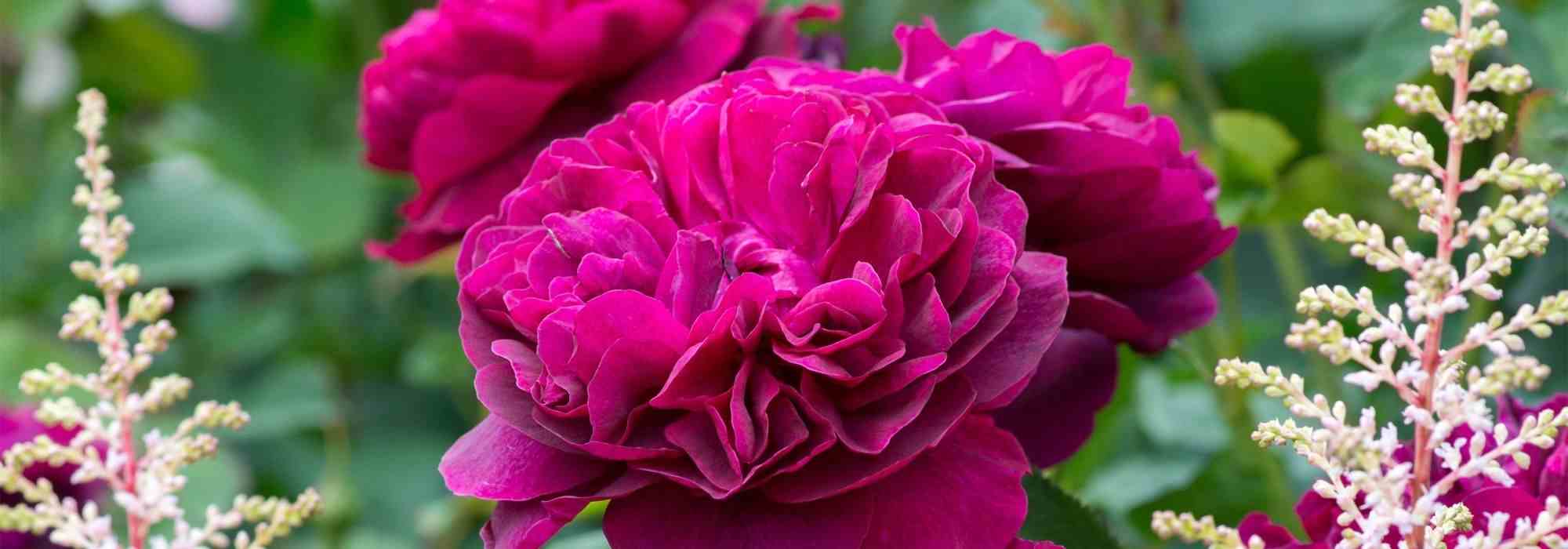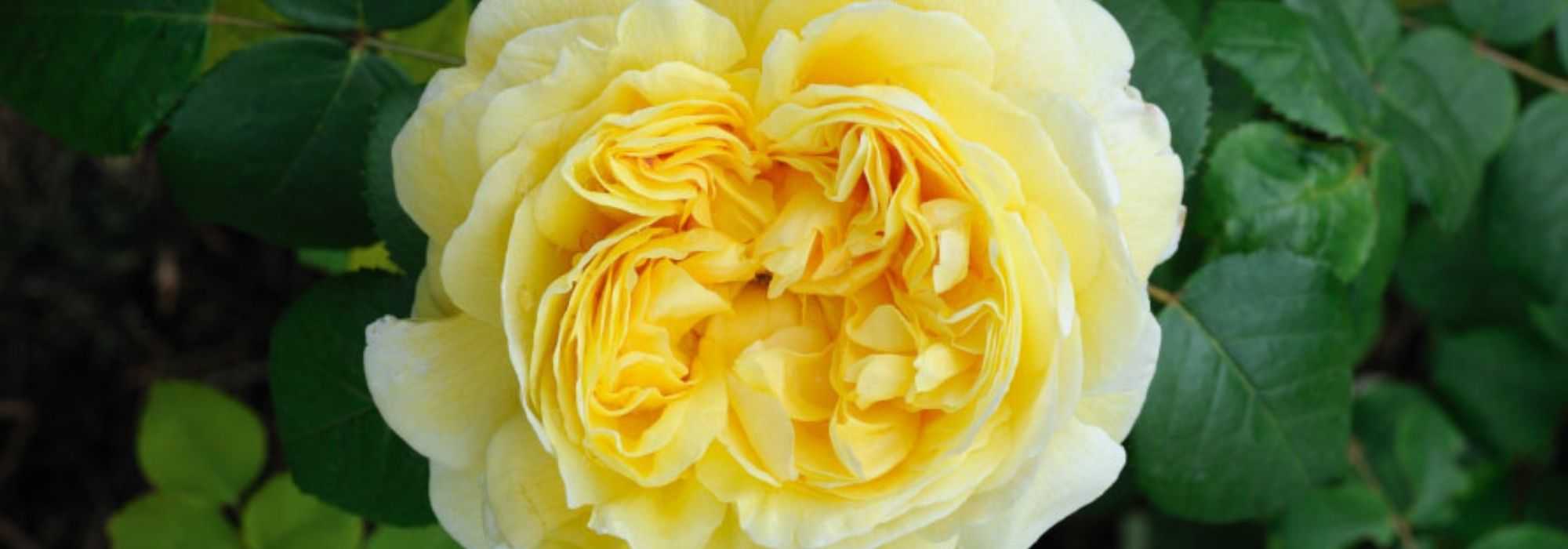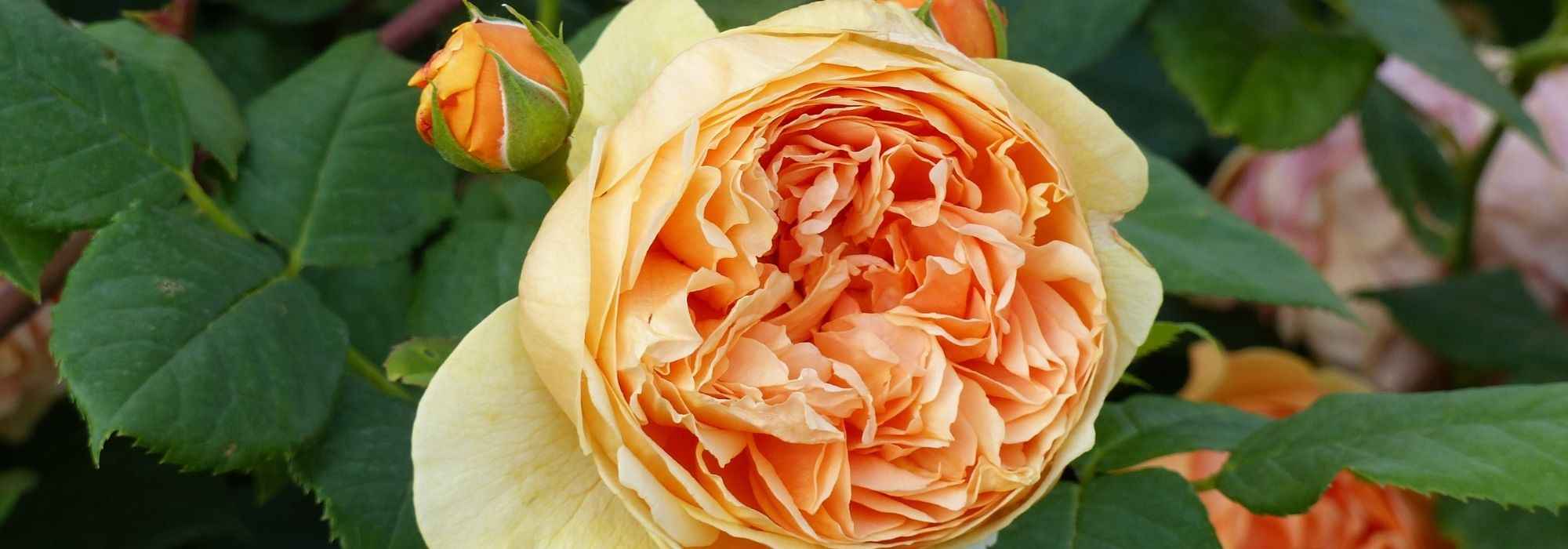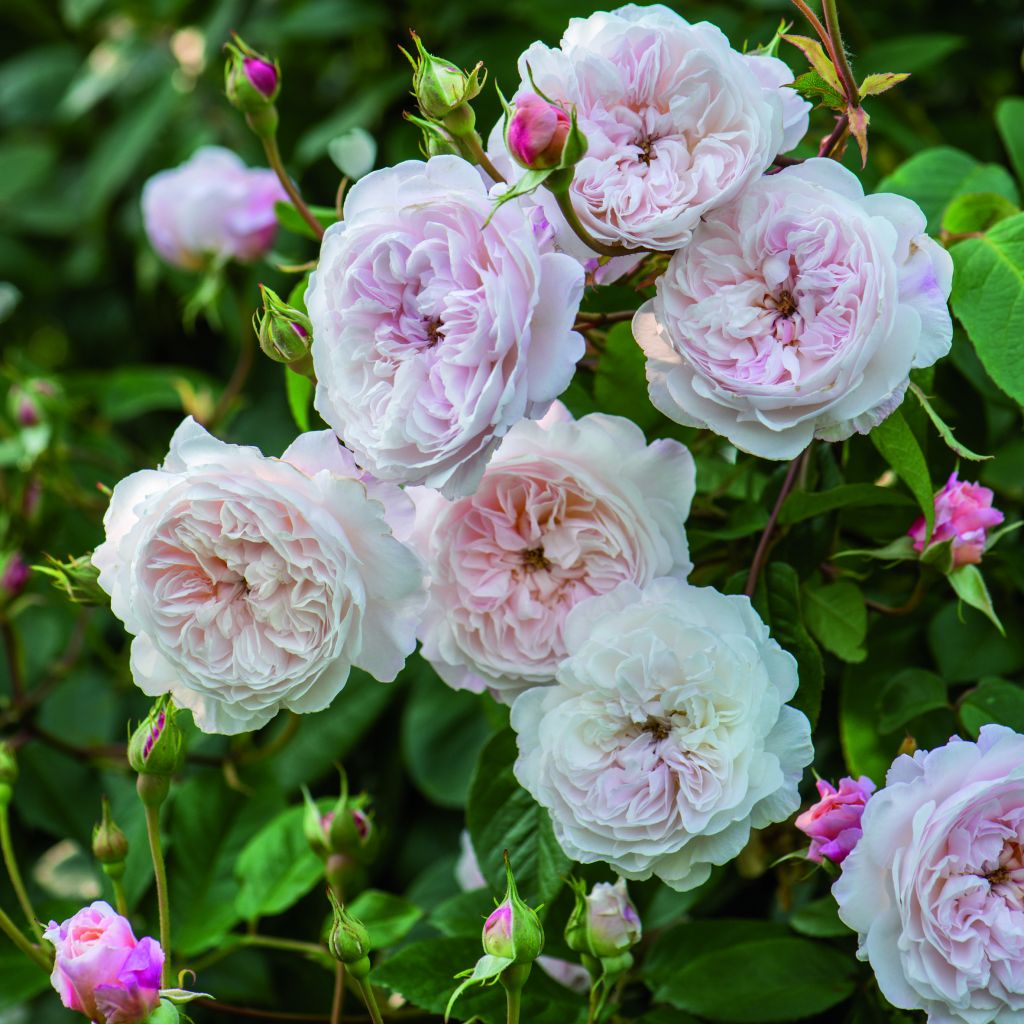

Rosa Albrighton Rambler 'Ausmobile'


Rosa Albrighton Rambler 'Ausmobile'
Rosa Albrighton Rambler 'Ausmobile'
Rosa Albrighton Rambler® 'Ausmobile'
Rose
Disappointed upon reception as I received a very small rose bush, with 3 tiny branches no bigger than a thin wire. Planted it immediately upon arrival over a month ago, but it doesn't seem to be growing much yet. I will wait a bit longer, but I am afraid... The other 2 rose bushes received, on the other hand, are much more beautiful. Quite disappointed at the moment.
Jean Pierre, 07/03/2025
Special offer!
Receive a €20 voucher for any order over €90 (excluding delivery costs, credit notes, and plastic-free options)!
1- Add your favorite plants to your cart.
2- Once you have reached €90, confirm your order (you can even choose the delivery date!).
3- As soon as your order is shipped, you will receive an email containing your voucher code, valid for 3 months (90 days).
Your voucher is unique and can only be used once, for any order with a minimum value of €20, excluding delivery costs.
Can be combined with other current offers, non-divisible and non-refundable.
Home or relay delivery (depending on size and destination)
Schedule delivery date,
and select date in basket
We guarantee the quality of our plants for a full growing cycle, and will replace at our expense any plant that fails to recover under normal climatic and planting conditions.
Description
The English rose Albrighton Rambler, a hybrid of Rosa sempervirens, is a repeat flowering climber. Its roses are small, perfectly cupped, full and double, slightly fragrant. They display a delicate pink hue that fades to flesh pink, taking on cream, salmon and sometimes yellow shades and are arranged in gracefully trailing large bouquets. Its growth is vigorous, and its foliage elegant, fine and exceptionally resistant with a glossy shine. Perfect for elegantly covering a pergola, an arbor, or hiding an unsightly fence.
The Albrighton Rambler rose is an English climbing rose that can reach a minimum height of 3.50 m (11ft) with a minimum spread of 1 m (3ft). It inherits from its ancestor Rosa sempervirens its exceptional resistance to diseases, stems with few, slightly curved prickles, leaves generally consisting of five leaflets, sometimes seven. The leaflets, ovate-lanceolate, shiny on their upper surface, glabrous, measure from 2 to 5 cm (1 to 2in) in length. These relatively tough, dark green leaves persist partially through the winter. It offers repeat flowering; its flowers, 6 cm (2in) in diameter, formed of beautifully arranged petals open to a small eye and are produced on the plant from summer to early autumn. They show resistance to rain. Their slightly musky fragrance is typical of sempervirens hybrids. Its fruit is ovoid, red-orange when ripe, and measures about 1 cm (0.5in) in length.
Resistant to diseases, the Albrighton Rambler climbing rose, like the famous Felicite and Perpetue, adapts to both hot and cold climates, and withstands temperatures as low as -15/-20°C. It is a vigorous and trouble-free variety, absolutely charming. Like other climbers, it is unbeatable for filling large spaces and giving a slightly abandoned look. It can also be encouraged to climb into a small tree. It is a perfect choice for decorating an old wall, an arch, a pergola or a trellis.
Obtained by David Austin in 2013.
Rosa Albrighton Rambler 'Ausmobile' in pictures
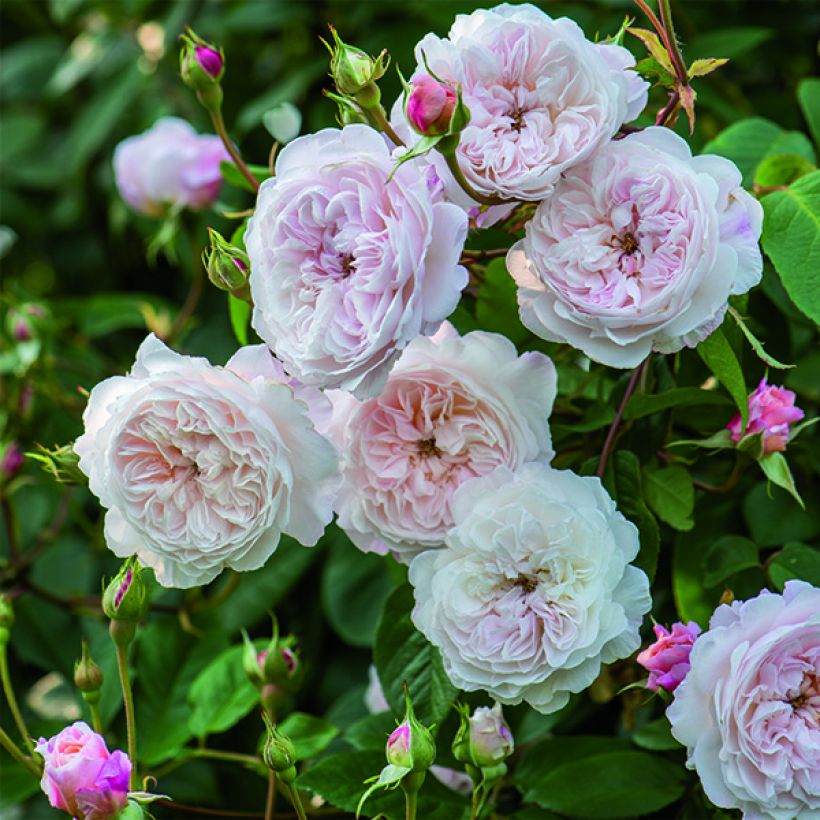

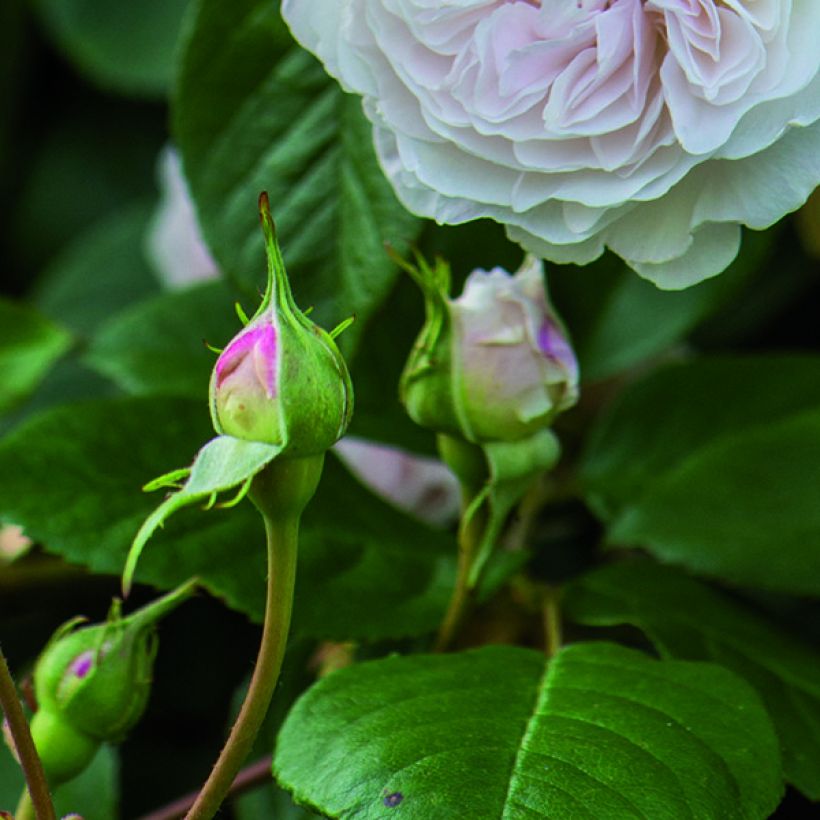

Plant habit
Flowering
Foliage
Botanical data
Rosa
Albrighton Rambler® 'Ausmobile'
Rosaceae
Rose
Cultivar or hybrid
Rosa canina Laxa (Wrapped bare root, 4L/5L pot)
Planting and care
Plant your English Climbing Rose Albrighton Rambler in a sunny or lightly shaded position. Sempervirens hybrids are known for their tolerance to climate and soil, adapting well, for example, to the dryness of Mediterranean summers. English roses are tolerant but will not like excessive limestone. They will adapt to any garden as long as the soil is well worked and rich enough. To plant your rose, work the soil by crumbling it and put an amendment, such as bonemeal, at the bottom of the planting hole. Water generously after planting to eliminate air pockets. Water regularly for a few weeks to encourage rooting. Pruning English roses is essential for flowering. Prune in late winter.
Pinch the ends of the main branches and cut back the secondary branches to two or three buds. Choose an outward-facing bud for a more elegant habit. Also prune to remove dead wood and unsightly branches. Pruning should be done at an angle above a bud. As the flowering progresses, if possible, remove faded flowers, as this stimulates the development of other buds.
Roses are often spotted or unsightly at the end of summer, but this is not a problem for their development. These spots are not harmful to the rose, it is a natural phenomenon.
Planting period
Intended location
Care
Planting & care advice
-
, onOrder confirmed
Reply from on Promesse de fleurs
Haven't found what you were looking for?
Hardiness is the lowest winter temperature a plant can endure without suffering serious damage or even dying. However, hardiness is affected by location (a sheltered area, such as a patio), protection (winter cover) and soil type (hardiness is improved by well-drained soil).

Photo Sharing Terms & Conditions
In order to encourage gardeners to interact and share their experiences, Promesse de fleurs offers various media enabling content to be uploaded onto its Site - in particular via the ‘Photo sharing’ module.
The User agrees to refrain from:
- Posting any content that is illegal, prejudicial, insulting, racist, inciteful to hatred, revisionist, contrary to public decency, that infringes on privacy or on the privacy rights of third parties, in particular the publicity rights of persons and goods, intellectual property rights, or the right to privacy.
- Submitting content on behalf of a third party;
- Impersonate the identity of a third party and/or publish any personal information about a third party;
In general, the User undertakes to refrain from any unethical behaviour.
All Content (in particular text, comments, files, images, photos, videos, creative works, etc.), which may be subject to property or intellectual property rights, image or other private rights, shall remain the property of the User, subject to the limited rights granted by the terms of the licence granted by Promesse de fleurs as stated below. Users are at liberty to publish or not to publish such Content on the Site, notably via the ‘Photo Sharing’ facility, and accept that this Content shall be made public and freely accessible, notably on the Internet.
Users further acknowledge, undertake to have ,and guarantee that they hold all necessary rights and permissions to publish such material on the Site, in particular with regard to the legislation in force pertaining to any privacy, property, intellectual property, image, or contractual rights, or rights of any other nature. By publishing such Content on the Site, Users acknowledge accepting full liability as publishers of the Content within the meaning of the law, and grant Promesse de fleurs, free of charge, an inclusive, worldwide licence for the said Content for the entire duration of its publication, including all reproduction, representation, up/downloading, displaying, performing, transmission, and storage rights.
Users also grant permission for their name to be linked to the Content and accept that this link may not always be made available.
By engaging in posting material, Users consent to their Content becoming automatically accessible on the Internet, in particular on other sites and/or blogs and/or web pages of the Promesse de fleurs site, including in particular social pages and the Promesse de fleurs catalogue.
Users may secure the removal of entrusted content free of charge by issuing a simple request via our contact form.
The flowering period indicated on our website applies to countries and regions located in USDA zone 8 (France, the United Kingdom, Ireland, the Netherlands, etc.)
It will vary according to where you live:
- In zones 9 to 10 (Italy, Spain, Greece, etc.), flowering will occur about 2 to 4 weeks earlier.
- In zones 6 to 7 (Germany, Poland, Slovenia, and lower mountainous regions), flowering will be delayed by 2 to 3 weeks.
- In zone 5 (Central Europe, Scandinavia), blooming will be delayed by 3 to 5 weeks.
In temperate climates, pruning of spring-flowering shrubs (forsythia, spireas, etc.) should be done just after flowering.
Pruning of summer-flowering shrubs (Indian Lilac, Perovskia, etc.) can be done in winter or spring.
In cold regions as well as with frost-sensitive plants, avoid pruning too early when severe frosts may still occur.
The planting period indicated on our website applies to countries and regions located in USDA zone 8 (France, United Kingdom, Ireland, Netherlands).
It will vary according to where you live:
- In Mediterranean zones (Marseille, Madrid, Milan, etc.), autumn and winter are the best planting periods.
- In continental zones (Strasbourg, Munich, Vienna, etc.), delay planting by 2 to 3 weeks in spring and bring it forward by 2 to 4 weeks in autumn.
- In mountainous regions (the Alps, Pyrenees, Carpathians, etc.), it is best to plant in late spring (May-June) or late summer (August-September).
The harvesting period indicated on our website applies to countries and regions in USDA zone 8 (France, England, Ireland, the Netherlands).
In colder areas (Scandinavia, Poland, Austria...) fruit and vegetable harvests are likely to be delayed by 3-4 weeks.
In warmer areas (Italy, Spain, Greece, etc.), harvesting will probably take place earlier, depending on weather conditions.
The sowing periods indicated on our website apply to countries and regions within USDA Zone 8 (France, UK, Ireland, Netherlands).
In colder areas (Scandinavia, Poland, Austria...), delay any outdoor sowing by 3-4 weeks, or sow under glass.
In warmer climes (Italy, Spain, Greece, etc.), bring outdoor sowing forward by a few weeks.


































